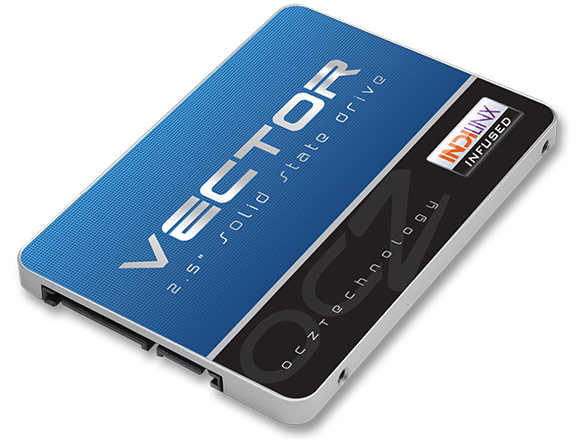OCZ Vector Barefoot 3 Solid State Drive Review
So how do you differentiate in market rife with strong products based on similar technologies? One way is to acquire a controller design firm and to create a product that uses all in-house technology, which is exactly what OCZ has done with the new Vector SSD we’ll be showing you here today. The Vector is the first drive from OCZ to utilize only technologies developed by the unified Indilinx, PLX, and OCZ teams (except for the actual NAND flash), since OCZ’s acquisitions were completed. The Vector is based on the new INDILINK Barefoot 3 controller, which in terms of its features and specifications, looks competitive with everything else on the market currently. Take a look:
|
128GB Model
256GB Model
|
Vector leverages new leading-edge Indilinx Barefoot 3 Platform. Features include:
|
Before we take a look at the actual drive, we should talk a bit about the INDILINX Barefoot 3 platform. Here's a quick block diagram of the controller...

As the diagram shows, the Barefoot 3 features a native SATA 6Gb/s interface, with a DRAM controller used for cache purposes, 8 channels to the NAND array, and a flash controller with built in randomizer, ECC engine and interface compatible with ONFI and Toggle NAND. At the heart of the chip is an ARM Cortex processor paired to an OCZ Aragon Co-Processor. Unfortunately, at this time, we don’t have any information to share in regards to the OCZ Aragon Co-Processor. Hopefully, OCZ will release details soon. The Barefoot 3 platform also offers low write amplification, idle garbage collection, TRIM support, multi-level ECC, and adaptive NAND flash management.



The OCZ Vector SSD: Inside and Out
The OCZ Vector drive itself uses a new, metal enclosure design that feels very strong and sturdy. The drive conforms to the standard 2.5” form factor that’s common among consumer-class SSDs, but has only a 7mm Z-height.
Inside the drive, you can see the new INDILINX controller, which is paired to some Micron DRAM cache and OCZ branded NAND. We should point out, however, that the NAND is actually 25nm IMFT flash memory. This particular drive is a 256GB model, but 128GB and 512GB models will also be available. According to its specifications, the 256GB drive is capable of max reads of 550MB/s, max writes of 530MB/s, with random read/write IOPS of 100,000, and 95,000 (4K QD32), respectively. What the specifications don't show is that the drive's performance is not affected by the compressibility of the data being transferred.
The numbers all look good; let's see how it fares in the benchmarks, shall we?







